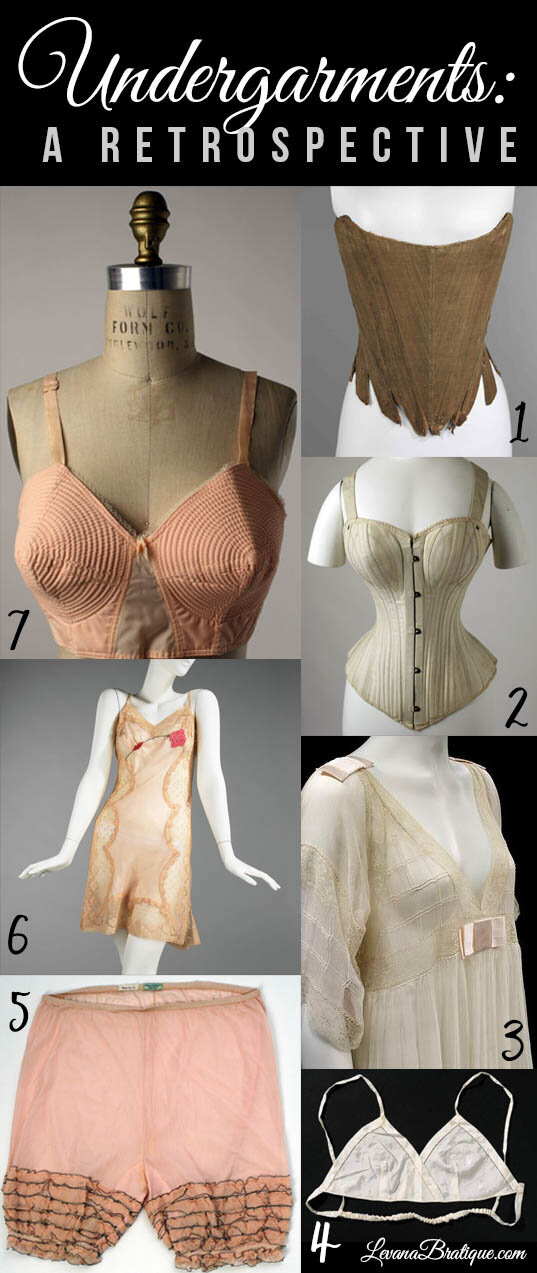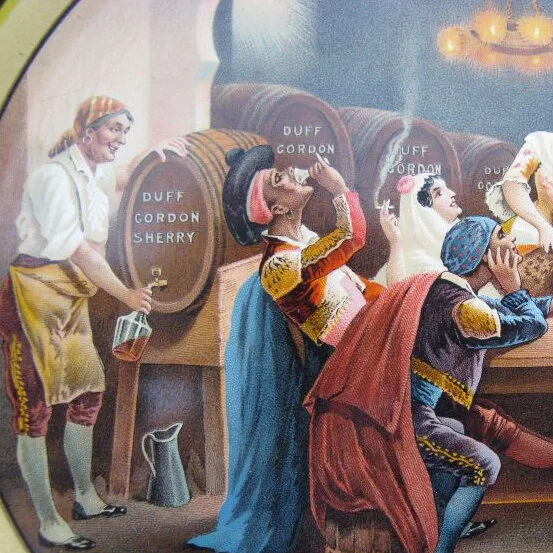Film and the History of Lingerie
Prior to beginning my research on the Ziegfeld Follies, I would never have associated early cinema with the (then) nascent fashion for sexy women’s underclothes which were designed to be seen— what I would call ‘lingerie’. As it turns out, when film was developing in the 1890s so was lingerie and both trees had their roots in the same soil.
After WWI Lady Duff Gordon, the Lucile fashion magnate, joined forces with Flo Ziegfeld to produce his spectacular girlie shows. LDG came to the partnership with a reputation for provocative sensuality that at least equaled Flo’s. Here’s an excerpt from Undergarments: A Retrospective:
Image courtesy of LevanaBratique.com and their “Undergarments: A Retrospective” feature. Note those saucy velvet bows!
“3. Lingerie- In the late 1800s/early 1900s English couturier Lady Duff-Gordon popularized less restrictive corsets and more alluring lingerie using lace, chiffon, and crepe-de-chene materials. Her disdain for boned corsets and wired underskirts drove her to craft sheer, provocative lingerie, designed to heighten sensuality.”
In the inset image, the picture marked “3” is a Lucile creation. HOWEVER, these luxurious, expensive garments weren’t being produced for high society. This excerpt comes from “The It Girls”, a biography of the LDG and her sister:
“One innovation that Lucy (LDG) introduced during her time in Old Burlington Street was the cause of a great deal of fashionable tea-time gossip. It was a room set aside for underwear which she called the Rose Room. But Lucy’s underwear was not the dull cambric or heavy cotton underpinnings hitherto thought appropriate by late Victorian ladies (if not their husbands). It was scandalously scanty and rather naughty. She designed and made these little camisoles, knickers, petticoats and nightgowns as carefully as she made her dresses, adding bedspreads and pillowcases to match in the palest of pink crepe de chine trimmed with lace and garlanded with silk roses. Even her corset covers were embroidered and had lace inserts.
“Half the women flocked to see them though they had not the courage to buy them at first,” said Lucy. “Those cunning little lace motifs let in just over the heart, those saucy velvet bows on the shoulder might surely be the weapons of the woman who was “not quite nice”? They all wanted to wear them, but they were not certain of their ground. They had to fly in the face of the conventional idea as to how a good woman went to bed at night…. At the same time she was clothing half London society in little nothings, Lucy was also beginning to make a name for herself in a different milieu: the theatre.”
LDG began her work as a fashion designer from her mother’s apartment, having divorced her older, alcoholic, wine-merchant husband who liked women and the fast life— and who spent a good deal of money on both. At the end of the nineteenth century, US and UK government programs designed to combat venereal disease focused on the link between alcoholism and patronage of prostitutes; programs for which LDG’s first husband could have been a cautionary poster-boy. It appears that LDG found a way of making some money back from these institutions, because encouraging the girls to work up huge debts— particularly for things like lingerie— is one way the pimps controlled their product.
In his study of the ‘White Slave Trade’, Edward J Bristow notes that prostitutes themselves judged each other by the newness and quality of their lingerie. In the world of ‘high class’ prostitution, it wasn’t just the physical act being sold, but the illusion of a luxurious, bohemian lifestyle— the same illusion that is exploited in most lingerie advertising today. LDG was in on the ground floor profiting from this underworld culture.
Film, too, was a tool of these high-class bordellos, and like alcohol, pornographic films were offered to get patrons ‘in the mood’— they were considered “loss leaders” and were an important part of the early demand for (very expensive) film production and display equipment. The films would typically feature girls working in the bordello, but more generic options were on offer— even from the esteemed Edison company, which otherwise did a great deal to make hard-core pornographer’s lives’ miserable.
Prior to the invention of film, expensive bordellos would keep large collections of pornographic photographs that both advertised their girls and tried to overcome the inherent unsexiness of the situation for punters— collections not unlike that of National Salesgirls Beauty Contest judge Alfred Cheney Johnston.
Since turn-of-the-century showgirls, opera singers and actress were often prostitutes— or at least the kept women of rich men— the marriage of high-class Vaudeville and high-class lingerie had underlying synergies which only contemporaries ‘in the know’ would understand.







